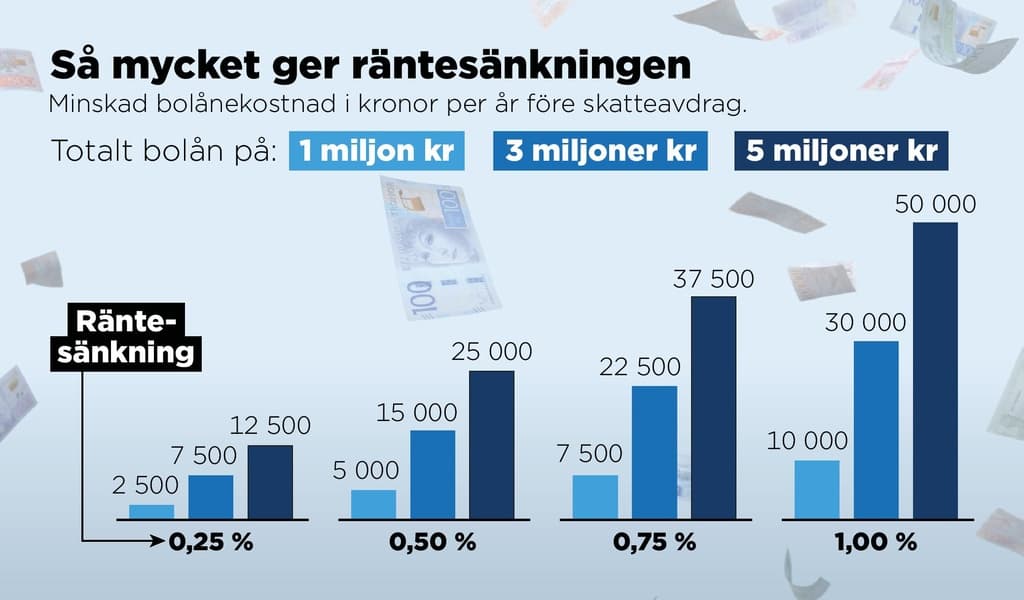With the first interest rate cut in over eight years in May and a second on Tuesday, the Swedish Central Bank is now flagging three more before the end of the year.
A single cut leads to slightly larger margins for pressured mortgage borrowers. A cut of a million-krona loan in line with the Swedish Central Bank's 0.25 percentage points means 2,500 kronor (before tax deductions) more per year.
If the Swedish Central Bank's new assessment becomes a reality with four cuts of 0.25 percentage points each, including today's, it means 10,000 kronor more for those with a loan of one million and 30,000 kronor on a loan of three million.
If we add up a number of cuts, it may start to be noticeable in the wallet of the average person who is a mortgage borrower, says Shoka Åhrman, savings economist at SPP.
Fixed or variable?
How much the banks choose to cut mortgage rates remains to be seen. Already before the Swedish Central Bank's announcement, several major banks have chosen to cut rates on their mortgages.
But it's not necessarily the case that every cut made by the Swedish Central Bank becomes a cut for you as a mortgage borrower.
Whether to bind one's rate or not is also the eternal question. More and more have chosen to have a variable rate, not least after strong signals that rate cuts are on the way. According to Länsförsäkringar, 95 percent of their customers chose a variable rate in July.
We know that rates are going down. Should one really bind the rate at this point? We don't think so. It's a bit too early, says Shoka Åhrman.
As always, it also depends on one's own economic situation.
Maybe one should be on parental leave or studying and therefore wants to know their exact monthly cost.
Building a buffer
But what should one do with those extra hundreds, or thousands, in the wallet? If one has emptied the savings account, it's important to refill the stock again, according to Shoka Åhrman.
Building up a buffer is good if we were to end up in a different price picture, for example, with regard to the geopolitical unrest that can drive up energy prices.
If one has also refrained from monthly savings for retirement or perhaps for the children, it may be time to start looking at it – if the margins are there.
If one feels that one is starting to get a bit more breathing room, it can be an idea to take care of those parts, she says.





